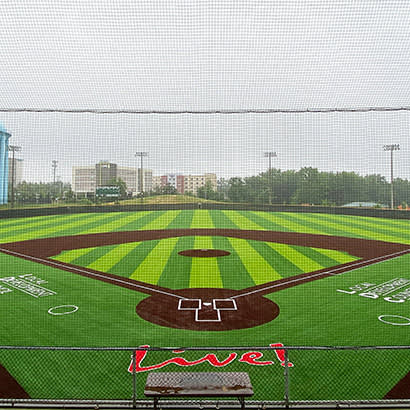
For an enhanced digital experience, read this story in the ezine.
In April, the EPA published a multiagency research report on synthetic turf sports fields that use crumb rubber infill. The study found no significant difference in the exposure from certain chemicals found between players who played on synthetic turf fields that use crumb rubber infill and those who played on grass fields.
In making its report, the EPA also cited three independent studies:
- Netherlands National Institute for Health and Environment wrote that the “risk to health from playing sports on these synthetic turf fields is virtually negligible.”
- European Chemicals Agency found “no reason to advise people against playing sports on synthetic turf containing recycled rubber granules as infill material.”
- National Toxicology Program found there “was no evidence of toxicity in mice from ingestion of crumb rubber.”
Research on the issue started in 2016, when the EPA — along with the CDC/Agency for Toxic Substances and Disease Registry and in collaboration with the Consumer Product Safety Commission — started a multiagency research effort, called the Federal Research Action Plan on the Use of Tire Crumbs in Playing Fields and Playgrounds. In mid-April, the three agencies jointly released the Synthetic Turf Field Recycled Tire Crumb Rubber Characterization Research Final Report: Part 2 - Tire Crumb Rubber Exposure Characterization.
Chris Franks of SCG Fields, LLC, believes that while many may not yet have heard of the ruling, those in the industry have been answering questions about synthetic fields for years and discussing their various advantages over natural grass fields in specific situations.
Among those advantages are the ability to host multiple sports without recovery time, and the ability to drain quickly and be ready for play right after a rain. Additionally, synthetic turf is manufactured in a variety of colors to fit various installations. Logos for park and recreation agencies and sponsors can be inlaid into the turf or can later be installed by the builder, using paints specifically compounded for synthetic turf.
Synthetic turf has been used not only on rectangle sports fields — such as those that host soccer, lacrosse, etc. — but also on diamonds for sports like softball and baseball as well as for a variety of other uses, including tennis courts, dog parks, playgrounds and other facilities. It remains a popular choice in the park and recreation setting where fields must host multiple events during the course of a day, a week or even an entire playing season.
“Field owners and park directors generally know what they want to install,” says Franks, “but satisfying community and parent concerns is still a tough conversation for them to navigate.”
One organization that was unsurprisingly pleased to hear about the report was the Synthetic Turf Council, a trade association that is a resource for credible, independent research on the safety and environmental impact of synthetic turf, as well as technical guidance on the selection, installation, maintenance and environmentally responsible disposal of synthetic turf.
“We thank the EPA for the dedication and time that went into this report and are pleased to see it reaffirms what other research has shown: synthetic turf and its system components are safe,” says Melanie Taylor, president and CEO of STC, in a public statement. “Synthetic turf systems unlock thousands of hours of additional play across America, save millions of gallons of water annually, and provide a more consistent playing surface. Our industry has long been and remains committed to safety and creating sustainable play spaces, and we are pleased to see that the largest study ever conducted on crumb rubber infill in the country demonstrates there is no elevated health exposure for playing on synthetic turf systems.”
Mary Helen Sprecher is Technical Writer at American Sports Builders Association.


